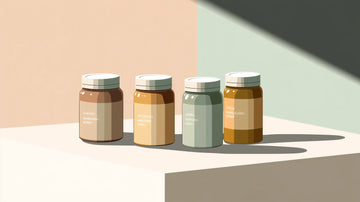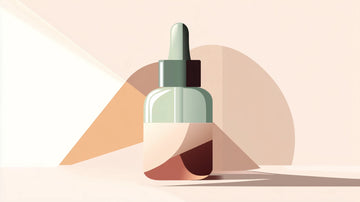Do you suffer from hot flashes or night sweats? Adopting garments made from natural fibers can greatly improve your comfort. These materials help regulate body temperature and absorb moisture, while remaining gentle on the skin.
Recommended subjects:
- Cotton : Absorbs moisture and remains breathable.
- Flax and hemp: Ideal cooling effect for hot days.
- Silk and viscose : Soft and perfect for sensitive skin.
Practical advice:
- Superposition: Combine cotton, linen, or silk layers to adjust to temperature variations.
- Wide cuts: Opt for flowing garments such as lightweight shirts, straight-leg trousers, or trapeze dresses.
- Nightwear: Choose bamboo or organic cotton for a more pleasant sleep.
By incorporating these natural fabrics into your wardrobe and adopting a balanced diet along with regular physical activity, you can better manage the symptoms of menopause and improve your daily well-being.
Linen, bamboo, cotton, which is the best material against the heat?
Why Choose Natural Fibers
Natural fibers help regulate temperature and humidity, offering effective relief from the symptoms of menopause.
Cotton: Everyday Comfort and Practicality
Cotton is perfect for everyday use thanks to its ability to breathe well and absorb moisture. It is particularly suited for:
- Everyday clothing, underwear and sleepwear
This fabric helps keep the skin dry during hot flashes, providing essential comfort.
Linen and Hemp: Perfect for Heat
These fibers are known for their ability to regulate body temperature. Here are some of their benefits:
| Property | Advantage |
|---|---|
| Breathability | Allows excellent ventilation |
| Absorption | Quickly wicks away sweat |
| Thermoregulation | Helps to stabilize the temperature |
Linen and hemp are ideal for hot days or physical activities, naturally reducing the effects of hot flashes.
Silk and Viscose: Softness and Protection
Silk and viscose are particularly soft options, perfect for sensitive skin during menopause. Silk naturally regulates body temperature, adapting to thermal variations.
Viscose, derived from natural fibers, offers several advantages:
- Excellent absorption capacity
- Hypoallergenic and gentle on the skin
- Pleasant lightness to wear
These materials are perfectly suited for garments that come into direct contact with the skin, such as nightshirts or tops. They ensure optimal comfort, even during episodes of nocturnal heat.
These fibers play an essential role in a wardrobe that meets the specific needs of menopause, as we shall see later.
How to Wear Natural Fibers
Now that you are aware of the benefits of natural fibers, let's see how to easily integrate them into your everyday outfits. Here are some practical tips for taking advantage of their unique properties.
The Art of Superposition
Layering is an excellent way to adapt to temperature changes. Here are some suggestions for choosing the right layers and materials:
| Layer | Recommended Material | Main role |
|---|---|---|
| Base | Light cotton or bamboo | Absorb moisture |
| Intermediate | Linen or viscose | Help maintain a comfortable temperature |
| external | Silk or hemp | Offer protection and style |
With these tips, you can easily put together outfits that are both practical and stylish.
Bet on Fluid Cuts
Loose clothing is perfect for staying comfortable, especially when temperatures fluctuate. Here are some ideas for key pieces:
- Light and flowing shirts
- Straight or slightly flared trousers
- Trapeze or empire cut dresses
These cuts allow you to feel comfortable while remaining chic.
Comfortable Nightwear
For pleasant nights, choose materials such as eucalyptus, bamboo, or organic cotton. Combine these fabrics with an ideal room temperature, between 16 and 18°C, for restorative sleep.
| Type of Clothing | Recommended Material | Strengths |
|---|---|---|
| Nightgown | Bamboo | Naturally regulates the temperature |
| pajamas | Organic cotton | Breathable and comfortable |
| nightie | Natural silk | Unmatched gentleness and freshness |
These choices will help you build a wardrobe that is both functional and elegant, ideal for meeting the specific needs of this stage of life.
Other Ways to Reduce Symptoms
Nutrition for Hormonal Balance
A varied diet, including foods rich in phytoestrogens, can help regulate hormones. Here are some options to prioritize:
| Category | Recommended Foods | Main strengths |
|---|---|---|
| Soybean | Tofu, soy milk | Contains isoflavones that mimic estrogens |
| Flax seeds | Ground flax seeds | Source of lignans with estrogenic properties |
Positive Effects of Physical Exercise
Exercising regularly can help reduce stress, improve metabolism, and alleviate certain symptoms. Try incorporating into your routine:
- 30 minutes of brisk walking
- 2 to 3 weekly yoga or swimming sessions
- Breathing exercises for a calming effect
These activities, combined with a fiber-rich diet, can improve your overall comfort.
Additional Natural Approaches
To complement a balanced diet and regular physical activity, natural solutions can be considered. For instance, Harmonie Daily from Laboratoires üma is often recommended to reduce hot flashes, improve sleep quality, and stabilize mood. Over 30,000 doctors endorse its use. However, make sure to consult a health professional before making any changes to your routine.
Conclusion: Managing menopause with natural fibers
Your clothing choices play an important role in your overall well-being during menopause. Natural materials like cotton, linen, hemp, silk and viscose are ideal for improving your daily comfort.
These fabrics help regulate body temperature and absorb moisture, which can reduce inconveniences such as night sweats. By choosing clothing designed with these materials, you can better manage body fluctuations associated with this period.
Wearing loose clothing and relying on the layering technique fits perfectly into a wellness routine. When combined with a balanced diet and regular physical activity, this approach to dressing can greatly enhance your comfort.
For the night, opt for materials such as cotton, linen or silk, which promote a more pleasant sleep. These simple choices can really make a difference in your daily life.
By combining these natural fabrics with healthy lifestyle habits, you can approach this transition with greater serenity. Every clothing adjustment contributes to creating an environment suited to your needs.
Frequently Asked Questions
How to dress your menopausal body?
Choose loose and comfortable clothes that allow good ventilation, particularly useful in the face of bodily changes. Wide cuts are ideal for providing comfort while remaining elegant.
Here are some suggestions for clothing to prioritize:
- Flowing shirts and tunics: for a feeling of lightness.
- Casual trousers: that do not squeeze the waist.
- Light and loose-fitting dresses: perfect for hot days.
The idea is to choose clothing that breathes well while enhancing your appearance. And to better manage hot flashes, the choice of fabrics is just as important.
Which fabrics to choose for hot flashes?
Some fabric blends are particularly suited to coping with hot flashes. Here are a few examples:
| Fabric blend | Strengths |
|---|---|
| Cotton + Lycra | Stretchable and breathable |
| Silk + Viscose | Soft and absorbent |
| Modal + Micromodal | Effectively regulates the temperature |
To make the right choice, always read the composition labels. Avoid rigid or synthetic materials that might aggravate perspiration. These fabrics will help you create a wardrobe suited to this transitional period.
How to put together your wardrobe during menopause?
Opt for a simple and functional wardrobe made up of pieces in natural fibers that are easy to layer.
- For the night: opt for fabrics such as modal or bamboo, known for their freshness and softness.
- For the day: choose clothes made of linen or hemp, materials that naturally help regulate temperature.
These choices will allow you to remain comfortable throughout the day, regardless of temperature fluctuations.






